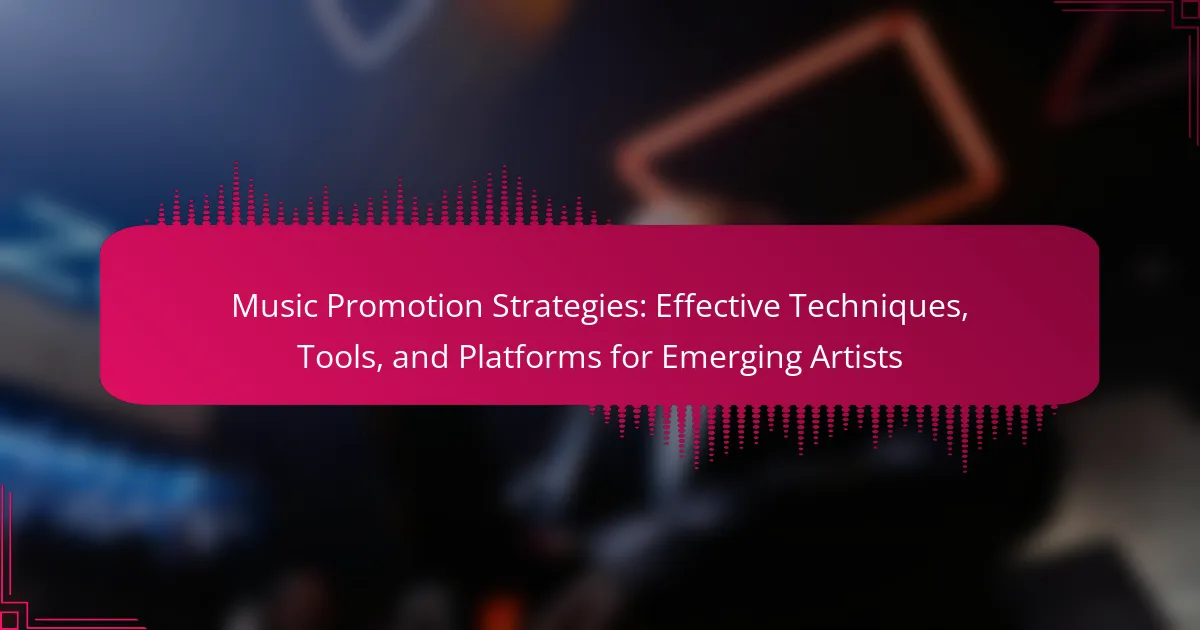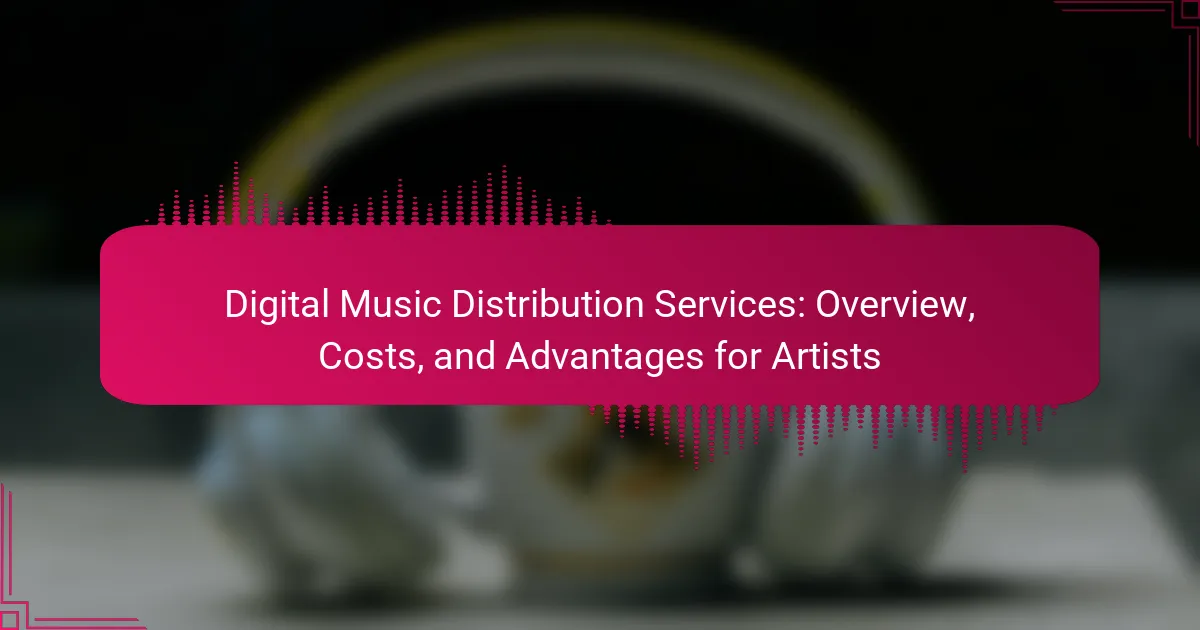Streaming distribution services provide essential support for artists while offering diverse content and pricing models. Key features include user-friendly interfaces, personalized recommendations, and various subscription options. Pricing strategies vary significantly, with tiered plans and ad-supported models to enhance accessibility. Additionally, these services offer marketing tools and analytics to help artists navigate the competitive landscape.
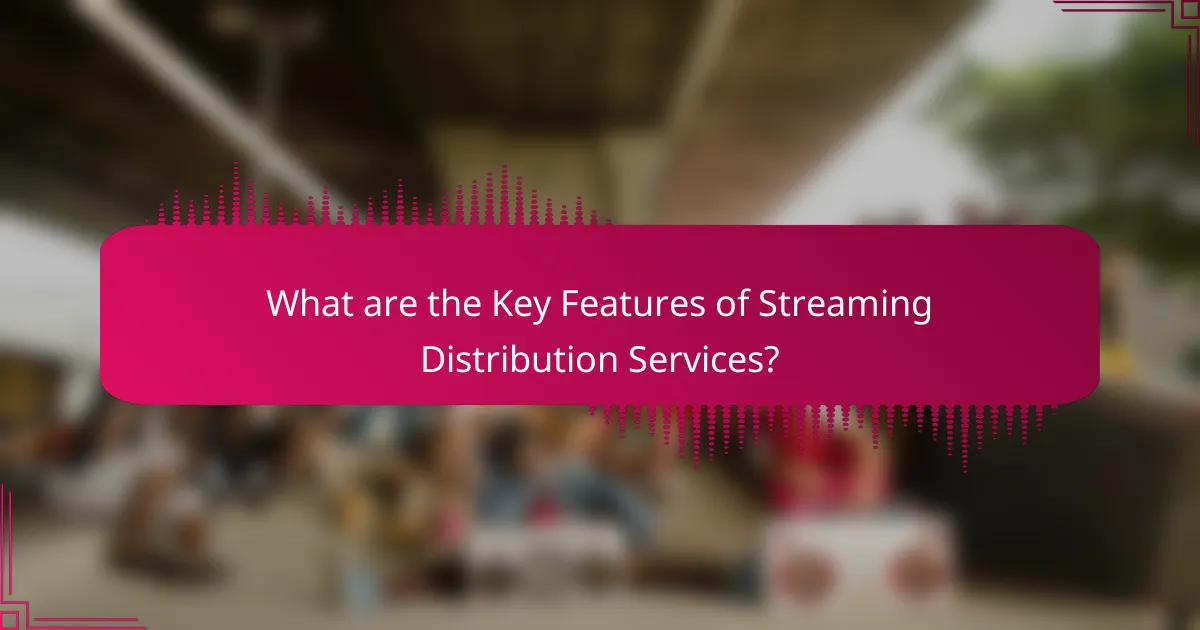
What are the Key Features of Streaming Distribution Services?
Streaming distribution services offer features such as diverse content libraries, user-friendly interfaces, and various subscription models. They support artists through revenue-sharing, promotional tools, and analytics to track performance. Key features include accessibility across devices, personalized recommendations, and offline listening options. Pricing varies by service, often including tiered plans to cater to different user needs.
How do Streaming Distribution Services Enhance Artist Visibility?
Streaming distribution services enhance artist visibility by providing platforms that promote music to a global audience. They offer features like playlist placements, social media integration, and analytics tools. These services often have partnerships with major playlists, increasing chances for exposure. Additionally, they support artists with marketing resources and promotional campaigns, creating opportunities for engagement with fans.
Which Tools Support Music Distribution Across Platforms?
Streaming distribution services like DistroKid, TuneCore, and CD Baby support music distribution across platforms. These services offer features such as global reach, royalty collection, and user-friendly interfaces. Pricing varies; for instance, DistroKid charges an annual fee, while TuneCore takes a percentage of sales. Artist support includes tools for marketing, analytics, and customer service.
What Metrics are Used to Measure Streaming Success?
Streaming success is measured by metrics like total streams, revenue generated, audience engagement, and subscriber growth. These indicators reflect the performance and reach of content on streaming distribution services.
| Metric | Description |
|———————–|—————————————————-|
| Total Streams | The overall number of times content is played. |
| Revenue Generated | Income earned from subscriptions and ad placements.|
| Audience Engagement | Interactions like likes, shares, and comments. |
| Subscriber Growth | Increase in the number of active users over time. |
| Retention Rate | Percentage of users who continue subscriptions. |
| Average Listening Time | Duration users spend listening to content. |
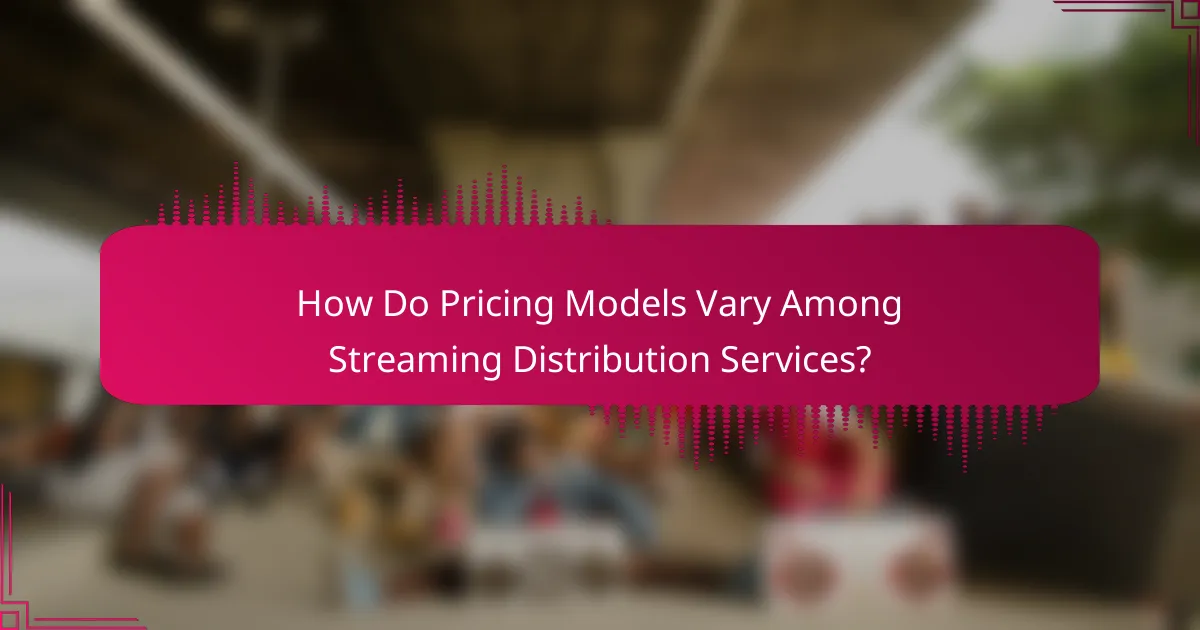
How Do Pricing Models Vary Among Streaming Distribution Services?
Pricing models among streaming distribution services vary significantly based on subscription tiers, revenue sharing, and content access. Services may offer monthly subscriptions, pay-per-view options, or ad-supported models. For example, platforms like Spotify provide tiered subscriptions, while others like YouTube rely on ad revenue. Additionally, some services implement unique pricing strategies, such as family plans or student discounts, enhancing accessibility. Overall, understanding these variations helps artists choose the right platform for their distribution needs.
What are the Common Pricing Structures for Artists?
Common pricing structures for artists using streaming distribution services include flat fees, revenue sharing, and tiered plans. Flat fees charge a one-time payment for distribution, while revenue sharing takes a percentage of earnings. Tiered plans offer varying features based on subscription levels. Each structure can impact artist earnings and support options.
How Do Royalties Work in Different Regions?
Royalties vary significantly across regions due to local laws, market practices, and distribution service agreements. In North America, streaming services typically offer higher per-stream rates compared to many other regions. In Europe, the focus is often on equitable revenue sharing, influenced by collective rights organizations. In Asia, diverse licensing models can lead to lower payouts, reflecting local consumption patterns. Understanding these regional differences is crucial for artists to maximize revenue from streaming platforms.
Which Factors Influence Pricing Decisions?
Pricing decisions for streaming distribution services are influenced by factors such as content licensing costs, market competition, user demographics, and technology infrastructure. These elements shape the overall pricing strategy and can lead to variations in subscription models. For example, services may offer tiered pricing based on content access levels or additional features. Artist support initiatives, such as revenue sharing and promotional opportunities, also impact pricing structures, ensuring that artists receive fair compensation while attracting a broader audience.
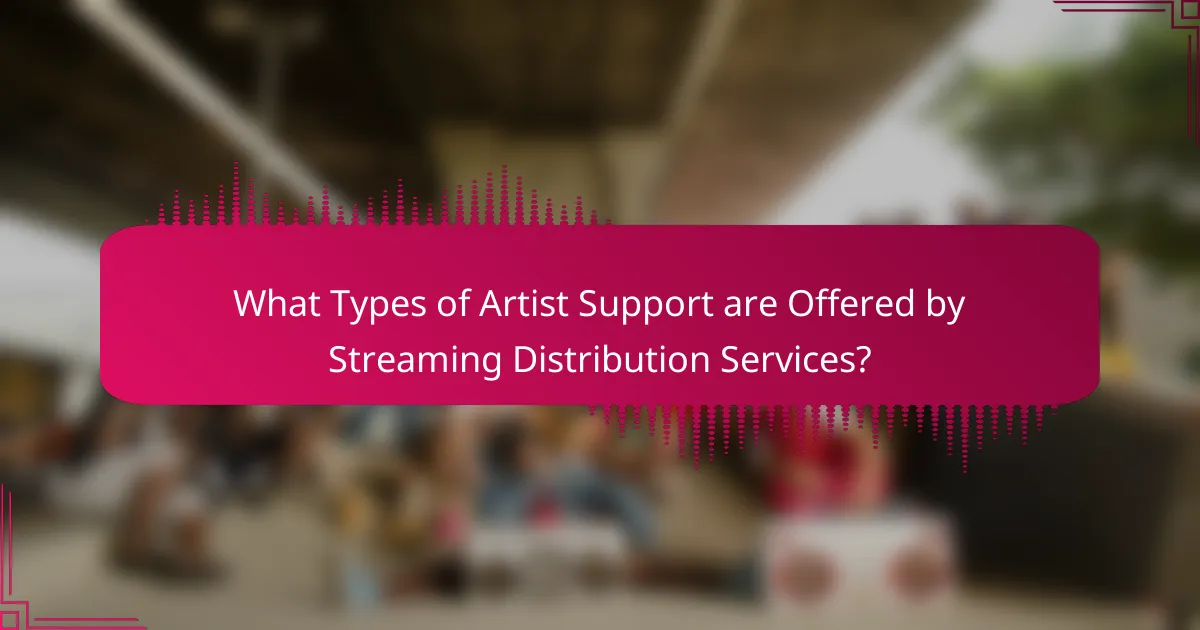
What Types of Artist Support are Offered by Streaming Distribution Services?
Streaming distribution services offer various types of artist support, including marketing tools, analytics, and royalty management. These services often provide promotional features such as playlist placements and social media integration. Additionally, they may offer educational resources like webinars and articles to help artists navigate the music industry. Some platforms even provide direct financial support through advances or grants for emerging artists.
How Do Services Provide Marketing Assistance to Artists?
Streaming distribution services provide marketing assistance to artists by offering promotional tools, analytics, and audience engagement strategies. These services help artists reach wider audiences through playlist placements, social media integration, and targeted advertising campaigns. They also provide insights into listener demographics and behavior, enabling artists to tailor their marketing efforts effectively. Additionally, many services offer educational resources to help artists navigate the music industry and enhance their promotional skills.
What Educational Resources are Available for Independent Musicians?
Independent musicians have access to various educational resources through streaming distribution services. These resources include tutorials, webinars, and artist support programs designed to enhance their music distribution knowledge and skills.
Key features of these services often encompass user-friendly interfaces, analytics tools, and marketing support. Pricing models vary, with some platforms offering free distribution options while others charge a percentage of royalties or a flat fee. Artist support can include personalized guidance, community forums, and promotional opportunities, helping musicians navigate the complexities of the music industry.
For example, platforms like DistroKid and TuneCore provide extensive resources, including FAQs and video guides, to assist artists in maximizing their reach and revenue.
Which Platforms Offer Unique Artist Support Programs?
Several streaming distribution services provide unique artist support programs. Notable platforms include DistroKid, which offers a fast release process and no annual fees, and CD Baby, known for its extensive promotional tools. TuneCore provides detailed sales reports and marketing resources, while Amuse focuses on artist-friendly contracts and free distribution. Each platform tailors its support to enhance artist visibility and revenue.
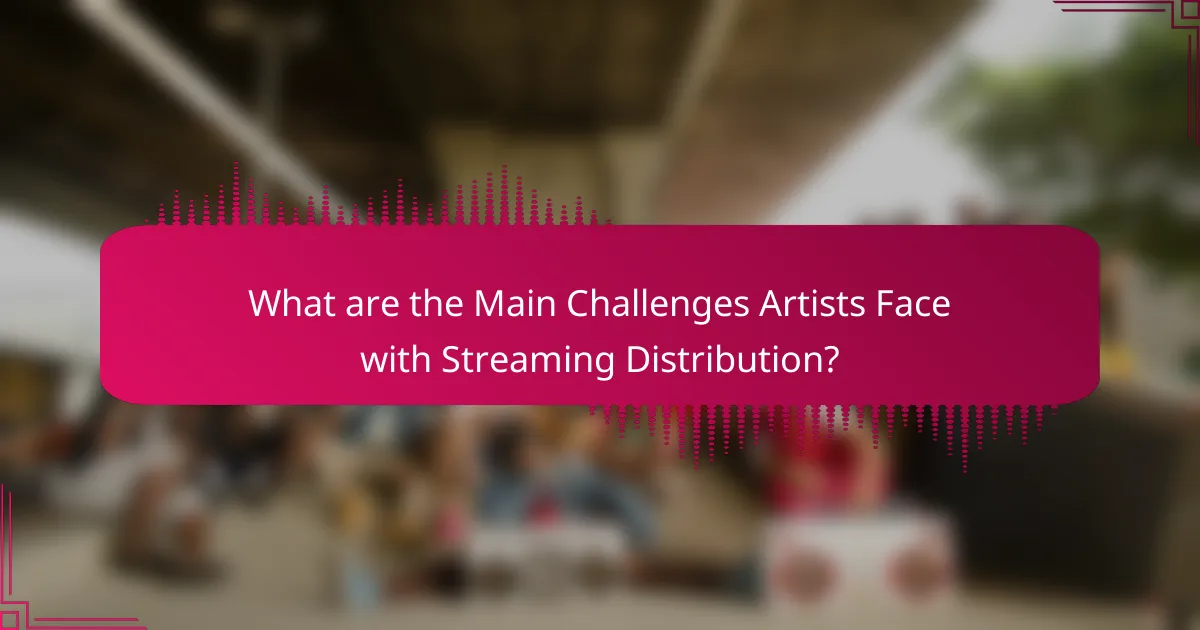
What are the Main Challenges Artists Face with Streaming Distribution?
Artists face several challenges with streaming distribution, including revenue-sharing models, visibility issues, and lack of support. Revenue-sharing often favors platforms over artists, leading to low payouts per stream. Visibility is another concern, as algorithms may not promote new or independent artists effectively. Additionally, many streaming services offer limited artist support, making it difficult for creators to navigate the distribution landscape and connect with their audience. These challenges can hinder an artist’s ability to sustain their career in a competitive market.
How Do Artists Navigate Revenue Sharing Agreements?
Artists navigate revenue sharing agreements by understanding the terms and leveraging streaming distribution services. These services typically outline how revenue is split based on factors like user engagement and subscription models. Transparency in agreements is crucial, as it informs artists of their potential earnings. Many platforms provide artist support, such as analytics tools, to help them optimize their revenue streams. Additionally, artists should compare different services to find favorable terms that align with their goals.
What Common Issues Arise in Content Delivery?
Common issues in content delivery for streaming distribution services include buffering, content availability, and user interface problems. Buffering occurs due to insufficient bandwidth or server issues, impacting user experience. Content availability varies by region, limiting access to certain titles. User interface problems can lead to navigation difficulties, frustrating users. Addressing these issues is crucial for enhancing user satisfaction and retention.

How Do Streaming Distribution Services Adapt to Regional Market Needs?
Streaming distribution services adapt to regional market needs by customizing content offerings, pricing models, and user experiences. They analyze local preferences and cultural trends to ensure relevance.
For instance, services may offer exclusive regional content or localized interfaces. Pricing strategies often vary, with some adopting tiered models based on regional purchasing power. Artist support initiatives may include local partnerships and promotional campaigns tailored to specific markets.
This adaptability enhances user engagement and satisfaction, solidifying the service’s presence in diverse regions.
What are the Cultural Preferences Influencing Music Distribution?
Cultural preferences significantly shape music distribution through streaming services. Regional tastes influence platform popularity and content curation. For example, services like Spotify and Apple Music adapt playlists to reflect local genres and trends. Additionally, pricing strategies often align with cultural spending habits, affecting subscription uptake. Artist support varies by platform, with some offering tailored marketing tools to enhance reach in specific markets.
How Do User Behaviors Differ Across Regions?
User behaviors in streaming distribution services vary significantly across regions due to cultural preferences, internet accessibility, and pricing strategies. For instance, North America often favors subscription-based models, while Europe may lean towards ad-supported services.
Additionally, in Asia, mobile streaming dominates due to high smartphone usage. User engagement metrics reveal that regions with higher disposable income tend to invest more in premium subscriptions.
The support for local artists also differs; some regions prioritize regional content to cater to local tastes, enhancing user loyalty and engagement. Understanding these differences is crucial for service providers aiming to optimize their offerings and marketing strategies.
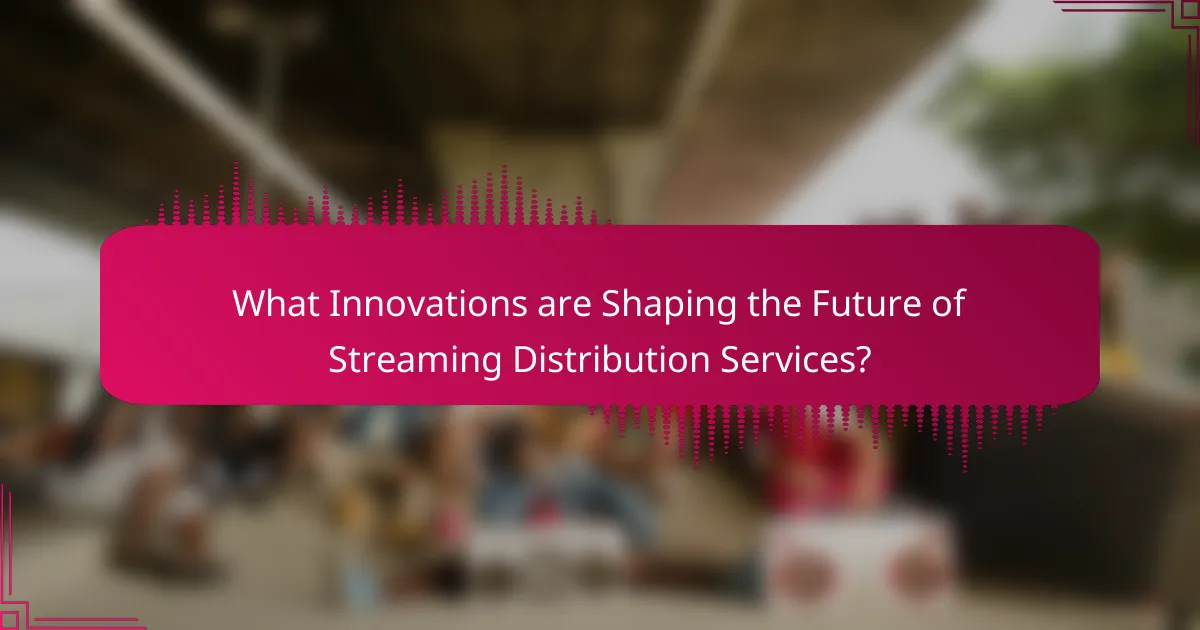
What Innovations are Shaping the Future of Streaming Distribution Services?
Innovations shaping the future of streaming distribution services include advanced algorithms, enhanced user interfaces, and blockchain technology. These innovations improve content delivery, enhance user experience, and ensure fair artist compensation. For example, AI-driven recommendations increase viewer engagement by personalizing content. Blockchain ensures transparency in revenue sharing, which is a unique attribute that benefits artists directly. As a result, streaming services are becoming more efficient and artist-friendly, adapting to changing consumer demands.
How is Technology Transforming Music Distribution?
Streaming distribution services are revolutionizing music distribution by offering accessible platforms for artists. Key features include user-friendly interfaces, extensive music libraries, and real-time analytics. Pricing models vary, with some services offering free tiers supported by ads, while others require subscriptions. Artist support often encompasses promotional tools, royalty tracking, and educational resources. These attributes empower musicians to reach wider audiences and manage their careers effectively.
What Role Does Data Analytics Play in Artist Support?
Data analytics plays a crucial role in artist support by providing insights into listener behavior and engagement. Streaming distribution services utilize data analytics to track streaming patterns, demographics, and preferences, enabling artists to tailor their marketing strategies effectively. This data helps artists understand their audience, optimize their releases, and enhance their overall presence in the music industry. Additionally, analytics can inform decisions on touring, merchandise, and collaborations, ensuring artists maximize their reach and revenue.
Which Emerging Trends Should Artists Watch For?
Artists should watch for emerging trends in streaming distribution services that enhance artist support and offer competitive pricing. Key features include user-friendly interfaces, robust analytics, and extensive distribution networks. These services are increasingly focusing on artist empowerment through better revenue sharing models and promotional tools. Additionally, the rise of decentralized platforms may provide unique opportunities for independent artists to reach audiences directly.
What Best Practices Can Artists Follow for Successful Distribution?
Artists should prioritize distribution services that offer comprehensive support and fair pricing. Key best practices include selecting platforms that provide data analytics, marketing tools, and user-friendly interfaces. Additionally, artists should consider services that facilitate global reach and offer competitive royalty rates. Regularly reviewing performance metrics can help optimize distribution strategies and enhance audience engagement.

